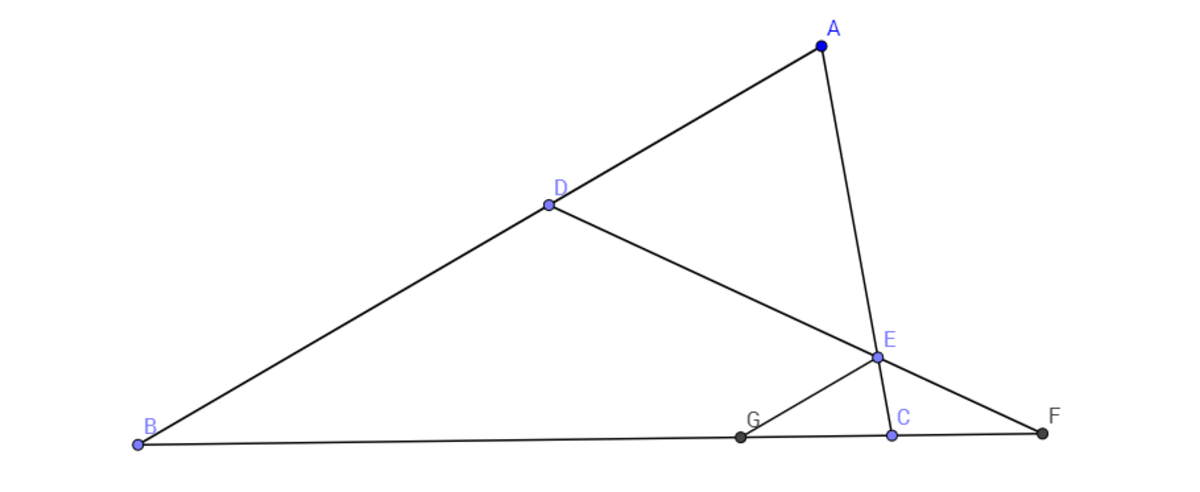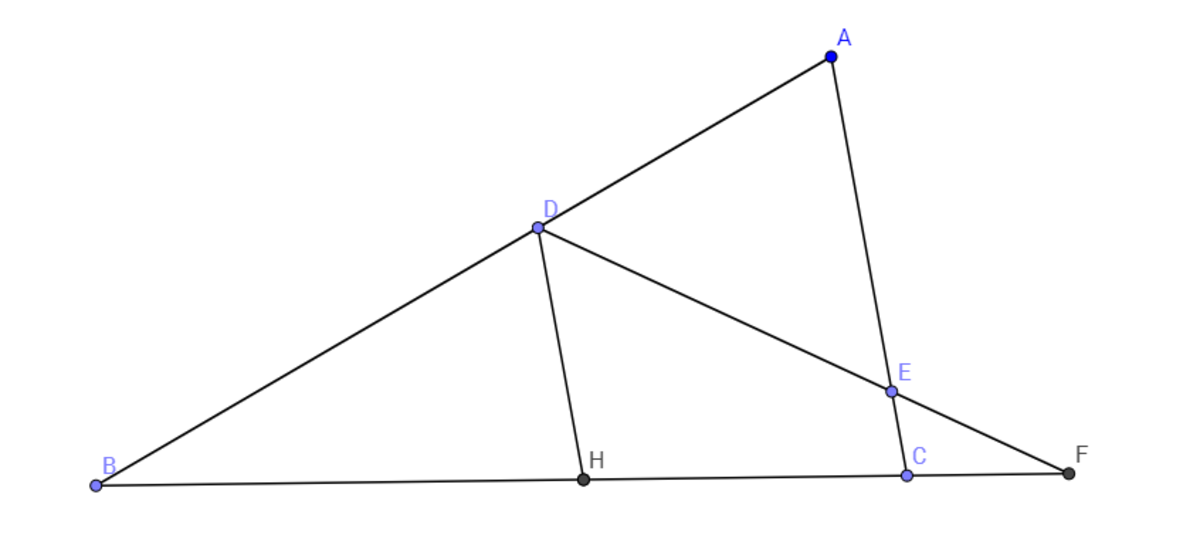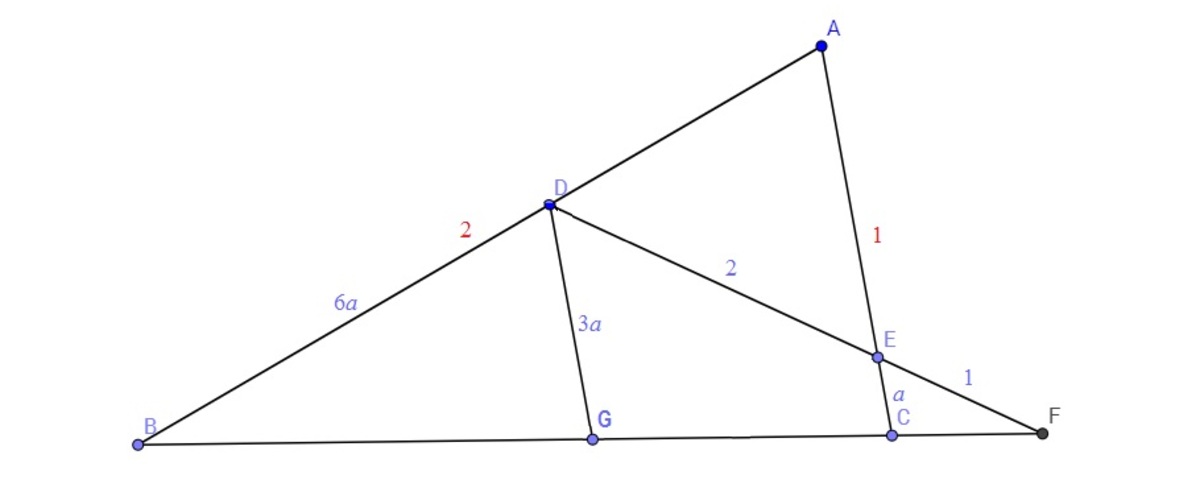Find the ratio!
In △ A B C , A B = 2 A C . A line intersects A B and A C internally at D and E respectively. It intersects B C produced at F . If D E = 2 E F , then C E B D = ?
The answer is 6.
This section requires Javascript.
You are seeing this because something didn't load right. We suggest you, (a) try
refreshing the page, (b) enabling javascript if it is disabled on your browser and,
finally, (c)
loading the
non-javascript version of this page
. We're sorry about the hassle.
2 solutions
Use similar triangles

Consider a point G on B C so that E G is parallel to A B . Then ∠ E G C = ∠ A B C as they are corresponding angles and ∠ E C G = ∠ A C B as they are common angles. Therefore,
C E G E = A C A B = 2
Moreover, ∠ B D F = ∠ G E F as they are corresponding angles and ∠ B F D = ∠ G F E as they are common angles. Therefore,
G E B D = E F D F = E F D E + E F = E F 2 E F + E F = 2 + 1 = 3
Finally, C E B D = G E B D × C E G E = 3 × 2 = 6

Alternatively, consider a point H on B C so that D H is parallel to B C . Then ∠ B D H = ∠ B A C as they are corresponding angles and ∠ D B H = ∠ A B C as they are common angles. Therefore,
D H B D = A C A B = 2
Moreover, ∠ D H F = ∠ E C F as they are corresponding angles and ∠ D F H = ∠ E F C as they are common angles. Therefore,
C E D H = E F D F = E F D E + E F = E F 2 E F + E F = 2 + 1 = 3
Finally, C E B D = D H B D × C E D H = 2 × 3 = 6
Thanks, @Noel Lo for the diagram. Draw a line
D
G
parallel to
A
C
. Then we note that
△
E
F
C
is similar to
△
D
F
G
. Therefore,
C
E
D
G
=
E
F
D
F
=
E
F
D
E
+
E
F
=
3
,
⟹
D
G
=
3
C
E
=
3
a
, where
C
E
=
a
.
Draw a line
D
G
parallel to
A
C
. Then we note that
△
E
F
C
is similar to
△
D
F
G
. Therefore,
C
E
D
G
=
E
F
D
F
=
E
F
D
E
+
E
F
=
3
,
⟹
D
G
=
3
C
E
=
3
a
, where
C
E
=
a
.
We also note that △ D B G is similar to △ A B C . Therefore, D G B D = A C A B = 2 , ⟹ B D = 2 D G = 6 a .
Now, we have C E B D = a 6 a = 6 .